Valletta, the capital city of Malta, is a treasure trove of history and culture waiting to be explored. One of the best ways to immerse yourself in the rich heritage of this UNESCO World Heritage site is through, these amazing walking tours. In this section, we'll delve into the benefits of exploring Valletta on foot and the historical significance of its charming streets.
Valletta is a perfect city to explore by walking. The narrow, winding streets are best navigated on foot, allowing you to discover hidden gems that may be missed when traveling by other means. The Valletta walking tours provide an intimate experience, letting you soak in the atmosphere, observe local life, and capture the essence of this historic city.
Every cobblestone in Valletta tells a story. As you stroll through the city, you'll encounter a tapestry of history woven into its architecture. From the monumental St. John's Co-Cathedral to the strategic Grandmaster's Palace, each step unveils the tales of knights, empires, and the resilience of the Maltese people. Valletta's streets are a living museum, and a walking tour is your key to unlocking its narratives.
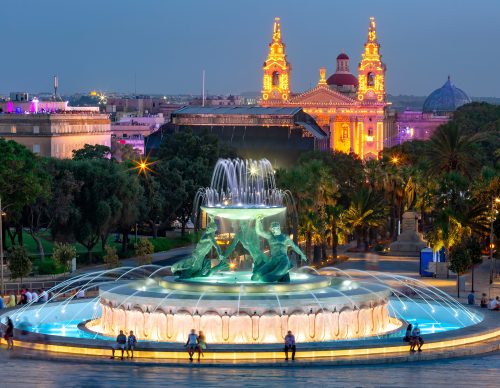
The square surrounding Triton Fountain has undergone various transformations as part of urban renewal projects. The fountain is surrounded by open space and offers a gathering point for locals and tourists alike. It stands in proximity to important landmarks such as the City Gate and the entrance to Valletta, making it a notable feature in the city's landscape.

The square surrounding Triton Fountain has undergone various transformations as part of urban renewal projects. The fountain is surrounded by open space and offers a gathering point for locals and tourists alike. It stands in proximity to important landmarks such as the City Gate and the entrance to Valletta, making it a notable feature in the city's landscape.
The Valletta City Gate
The Valletta City Gate is the grand entrance to the capital, showcasing a mix of historic and modern architecture. The City Gate has undergone several transformations throughout history, with the most recent redesign completed in 2014. Renowned architect Renzo Piano was involved in the project, which aimed to give a modern and welcoming appearance to the entrance of Valletta while respecting its historical significance.
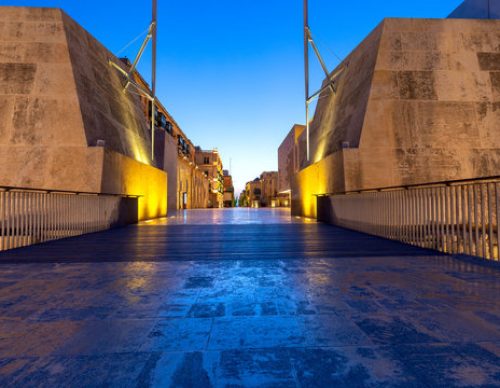

The Valletta City Gate
The Valletta City Gate is the grand entrance to the capital, showcasing a mix of historic and modern architecture. The City Gate has undergone several transformations throughout history, with the most recent redesign completed in 2014. Renowned architect Renzo Piano was involved in the project, which aimed to give a modern and welcoming appearance to the entrance of Valletta while respecting its historical significance.
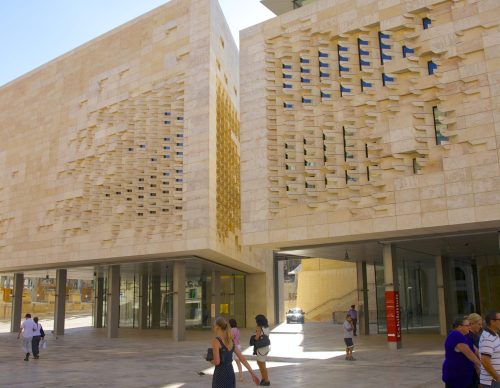

The Royal Opera House
The Royal Opera House in Valletta was originally constructed in the 19th century and served as a venue for various cultural performances, including operas, plays, and concerts. Unfortunately, the building suffered extensive damage during air raids in World War II and was subsequently demolished in the 1950s. The site of the former Royal Opera House has been preserved as a historical and cultural landmark. While the physical structure of the opera house is no longer present, the site has been recognized for its historical significance.
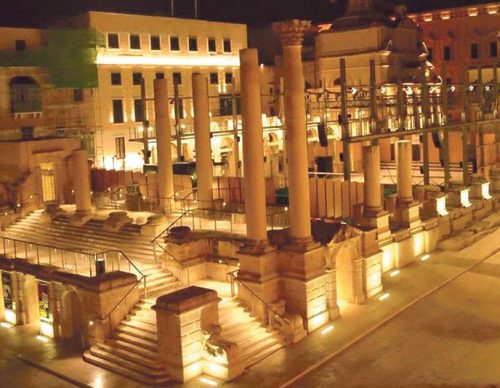

The Royal Opera House
The Royal Opera House in Valletta was originally constructed in the 19th century and served as a venue for various cultural performances, including operas, plays, and concerts. Unfortunately, the building suffered extensive damage during air raids in World War II and was subsequently demolished in the 1950s. The site of the former Royal Opera House has been preserved as a historical and cultural landmark. While the physical structure of the opera house is no longer present, the site has been recognized for its historical significance.
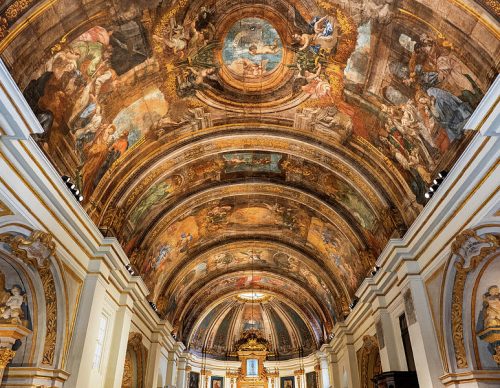
The Church of Our Lady of Victory
The Church of Our Lady of Victories, commonly known as St. Mary's Church, is a historic church located in Valletta, the capital city of Malta. The church was built to commemorate the victory of the Knights of St. John (Knights of Malta) over the Ottoman Turks during the Great Siege of 1565. Construction of the church began in 1566, immediately after the siege, making it one of the oldest churches in the heart of Valletta. The Church of Our Lady of Victories exhibits a mix of architectural styles, including Renaissance and Baroque elements. Also the interior of the church is adorned with religious artworks, paintings, and sculptures, contributing to the city's rich cultural and historical heritage. Like many historical buildings, the church has undergone various restoration projects to preserve its architectural and cultural value. Visitors to Malta often explore this church to appreciate its historical significance and architectural beauty.

The Church of Our Lady of Victory
The Church of Our Lady of Victories, commonly known as St. Mary's Church, is a historic church located in Valletta, the capital city of Malta. The church was built to commemorate the victory of the Knights of St. John (Knights of Malta) over the Ottoman Turks during the Great Siege of 1565. Construction of the church began in 1566, immediately after the siege, making it one of the oldest churches in the heart of Valletta. The Church of Our Lady of Victories exhibits a mix of architectural styles, including Renaissance and Baroque elements. Also the interior of the church is adorned with religious artworks, paintings, and sculptures, contributing to the city's rich cultural and historical heritage. Like many historical buildings, the church has undergone various restoration projects to preserve its architectural and cultural value. Visitors to Malta often explore this church to appreciate its historical significance and architectural beauty.
The Auberge de Castille
The Auberge de Castille, a historic building in Valletta, Malta, was constructed in the 1570s. Originally one of the seven auberges for the Order of St. John, it now serves as the office of the Prime Minister. Designed by Girolamo Cassar, the building exemplifies Renaissance architecture with its decorative sculptures and grand facade. Having witnessed key historical events, it played a role during the French occupation and later served various purposes under British rule. Today, it is the official seat of the Maltese government, symbolizing Malta's history and architectural heritage. The interior boasts grand halls with period furniture, undergoing renovations to preserve its integrity. While visitors can appreciate the exterior, access to the interior may be limited during official functions, making the Auberge de Castille a significant governance landmark in Malta.
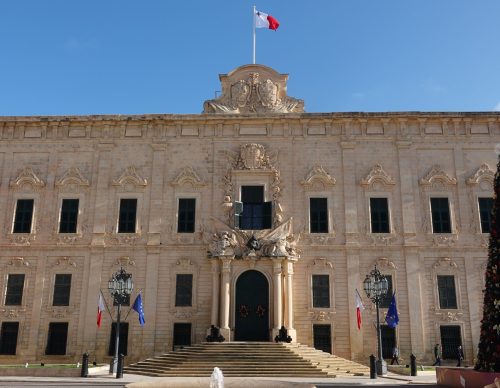

The Auberge de Castille
The Auberge de Castille, a historic building in Valletta, Malta, was constructed in the 1570s. Originally one of the seven auberges for the Order of St. John, it now serves as the office of the Prime Minister. Designed by Girolamo Cassar, the building exemplifies Renaissance architecture with its decorative sculptures and grand facade. Having witnessed key historical events, it played a role during the French occupation and later served various purposes under British rule. Today, it is the official seat of the Maltese government, symbolizing Malta's history and architectural heritage. The interior boasts grand halls with period furniture, undergoing renovations to preserve its integrity. While visitors can appreciate the exterior, access to the interior may be limited during official functions, making the Auberge de Castille a significant governance landmark in Malta.
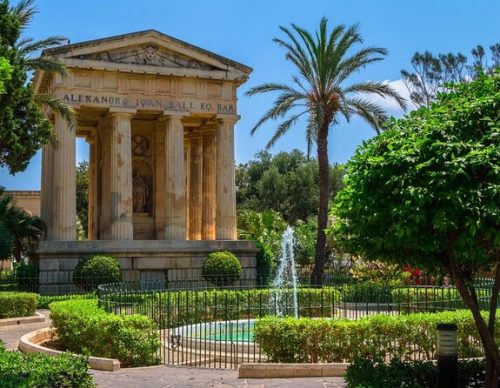
The Upper & Lower Barrakka Gardens
The Upper Barrakka Gardens, situated in Valletta, Malta, is a popular public garden offering stunning panoramic views of the Grand Harbour and the Three Cities. Originally a private garden for the Knights of St. John, it was later opened to the public in the 19th century. The gardens feature well-manicured lawns, vibrant flowerbeds, and several statues and monuments. One notable monument is the bronze statue of Sir Alexander Ball, a British naval officer. The gardens provide an ideal spot to relax, enjoy the scenic beauty, and witness the firing of the Noonday Gun, a historic tradition. The Upper Barrakka Gardens stand as a peaceful retreat and a prime vantage point to appreciate the historic maritime charm of Valletta.

The Upper & Lower Barrakka Gardens
The Upper Barrakka Gardens, situated in Valletta, Malta, is a popular public garden offering stunning panoramic views of the Grand Harbour and the Three Cities. Originally a private garden for the Knights of St. John, it was later opened to the public in the 19th century. The gardens feature well-manicured lawns, vibrant flowerbeds, and several statues and monuments. One notable monument is the bronze statue of Sir Alexander Ball, a British naval officer. The gardens provide an ideal spot to relax, enjoy the scenic beauty, and witness the firing of the Noonday Gun, a historic tradition. The Upper Barrakka Gardens stand as a peaceful retreat and a prime vantage point to appreciate the historic maritime charm of Valletta.
The Saluting Battery
The Saluting Battery is a historic artillery battery located in Valletta, Malta. Positioned on the eastern tip of the St. Peter & Paul Bastion, it provides panoramic views of the Grand Harbour. The battery was originally constructed by the Order of St. John in the 16th century and later expanded by the British in the 19th century. The Saluting Battery was historically used for firing cannons to mark various occasions, including the arrival of dignitaries and important events. Today, it serves as a popular tourist attraction, offering daily ceremonial cannon firings at noon. Visitors can enjoy not only the historical significance of the site but also breathtaking views of the Grand Harbour and the surrounding areas from this vantage point in Valletta.
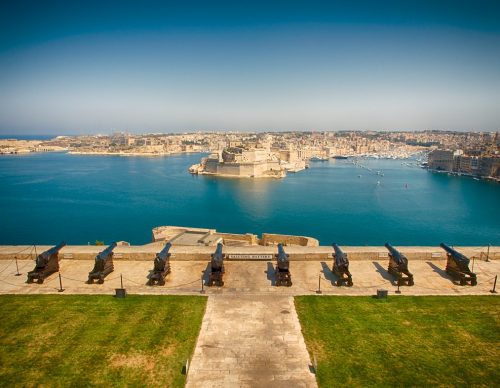

The Saluting Battery
The Saluting Battery is a historic artillery battery located in Valletta, Malta. Positioned on the eastern tip of the St. Peter & Paul Bastion, it provides panoramic views of the Grand Harbour. The battery was originally constructed by the Order of St. John in the 16th century and later expanded by the British in the 19th century. The Saluting Battery was historically used for firing cannons to mark various occasions, including the arrival of dignitaries and important events. Today, it serves as a popular tourist attraction, offering daily ceremonial cannon firings at noon. Visitors can enjoy not only the historical significance of the site but also breathtaking views of the Grand Harbour and the surrounding areas from this vantage point in Valletta.
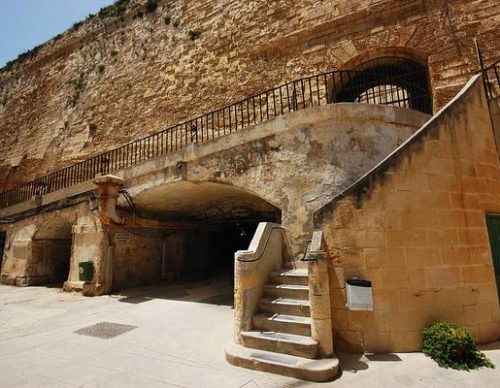
The Lascaris War Rooms
The Lascaris War Rooms in Valletta, Malta, are an underground complex that served as the headquarters for the Allied forces during World War II. Constructed beneath the Upper Barrakka Gardens, the war rooms were operational from 1940 to 1945 and played a crucial role in the defense of Malta. These Rooms stand as a testament to Malta's wartime resilience and the strategic importance of the island during a critical period in history. The museum provides a unique opportunity for visitors to delve into the military history of Malta and the Mediterranean during World War II.

The Lascaris War Rooms
The Lascaris War Rooms in Valletta, Malta, are an underground complex that served as the headquarters for the Allied forces during World War II. Constructed beneath the Upper Barrakka Gardens, the war rooms were operational from 1940 to 1945 and played a crucial role in the defense of Malta. These Rooms stand as a testament to Malta's wartime resilience and the strategic importance of the island during a critical period in history. The museum provides a unique opportunity for visitors to delve into the military history of Malta and the Mediterranean during World War II.
The National Museum of Archaeology
The National Museum of Archaeology in Valletta, Malta, housed in the historic Auberge de Provence, is dedicated to showcasing Malta's archaeological heritage from the Neolithic to the Phoenician period. Its extensive collection features artifacts from prehistoric sites, including the renowned Megalithic Temples. Highlights include exhibits on the Ġgantija Temples and iconic pieces like the Sleeping Lady statuette. With modern displays and interactive features, the museum offers a comprehensive exploration of Malta's unique archaeological past, contributing to education and understanding. Accessible in the heart of Valletta, it stands as a vital institution preserving and promoting Malta's rich history.
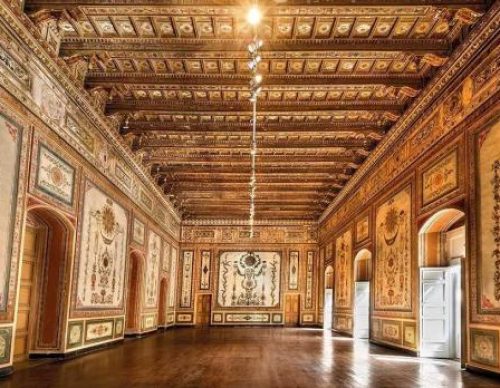

The National Museum of Archaeology
The National Museum of Archaeology in Valletta, Malta, housed in the historic Auberge de Provence, is dedicated to showcasing Malta's archaeological heritage from the Neolithic to the Phoenician period. Its extensive collection features artifacts from prehistoric sites, including the renowned Megalithic Temples. Highlights include exhibits on the Ġgantija Temples and iconic pieces like the Sleeping Lady statuette. With modern displays and interactive features, the museum offers a comprehensive exploration of Malta's unique archaeological past, contributing to education and understanding. Accessible in the heart of Valletta, it stands as a vital institution preserving and promoting Malta's rich history.
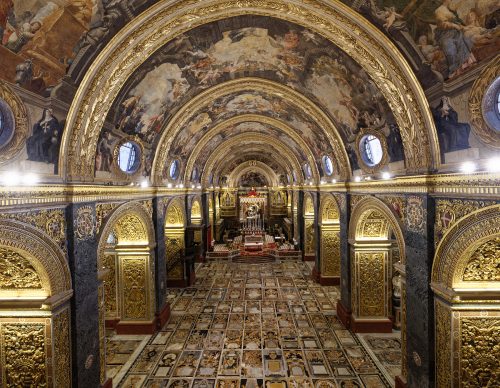
The St. John's Co-Cathedral
St. John's Co-Cathedral in Valletta, Malta, a Baroque masterpiece built in the late 16th century, is renowned for its opulent interior and architectural significance. Designed by Girolamo Cassar, the cathedral's unassuming exterior contrasts with its lavish interior adorned with intricate Baroque details and frescoes by Mattia Preti. Notable features include marble tombstones, chapels dedicated to patron saints, and two masterpieces by Caravaggio. Serving as the co-cathedral of the Knights of St. John, St. John's Co-Cathedral is a key cultural and religious site, attracting visitors with its rich history and artistic legacy.

The St. John's Co-Cathedral
St. John's Co-Cathedral in Valletta, Malta, a Baroque masterpiece built in the late 16th century, is renowned for its opulent interior and architectural significance. Designed by Girolamo Cassar, the cathedral's unassuming exterior contrasts with its lavish interior adorned with intricate Baroque details and frescoes by Mattia Preti. Notable features include marble tombstones, chapels dedicated to patron saints, and two masterpieces by Caravaggio. Serving as the co-cathedral of the Knights of St. John, St. John's Co-Cathedral is a key cultural and religious site, attracting visitors with its rich history and artistic legacy.
The Church of St. Paul's Shipwreck
The Church of St. Paul's Shipwreck in Valletta, Malta, was constructed around 1570 to commemorate the biblical shipwreck of the Apostle Paul on the island. Showcasing Baroque architecture and adorned with artworks, including pieces by Mattia Preti, the church is a cultural and religious landmark. The annual Feast of St. Paul's Shipwreck on February 10th involves religious processions, emphasizing Malta's strong connection to St. Paul's life. Situated in the heart of Valletta, the church offers visitors a glimpse into Malta's Christian heritage and plays a central role in the city's historical landscape.
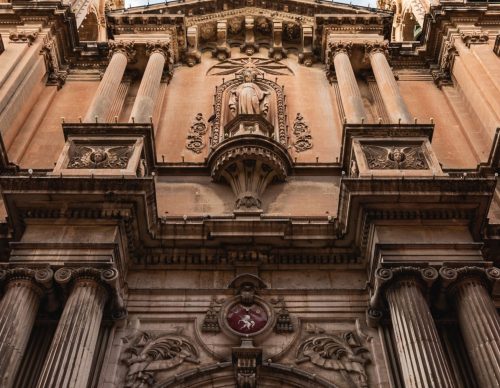

The Church of St. Paul's Shipwreck
The Church of St. Paul's Shipwreck in Valletta, Malta, was constructed around 1570 to commemorate the biblical shipwreck of the Apostle Paul on the island. Showcasing Baroque architecture and adorned with artworks, including pieces by Mattia Preti, the church is a cultural and religious landmark. The annual Feast of St. Paul's Shipwreck on February 10th involves religious processions, emphasizing Malta's strong connection to St. Paul's life. Situated in the heart of Valletta, the church offers visitors a glimpse into Malta's Christian heritage and plays a central role in the city's historical landscape.
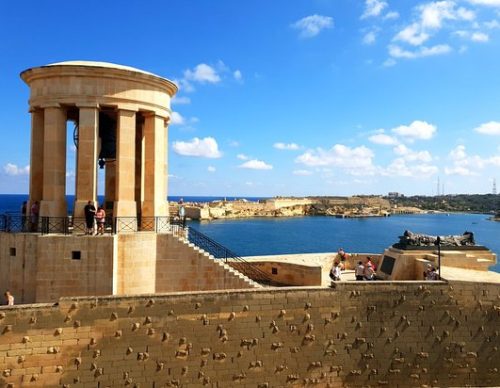
The Siege Bell Memorial
The Siege Bell Memorial in Valletta, Malta, erected in 1992, commemorates the 50th anniversary of the end of the Siege of Malta during World War II. Featuring a large bronze bell, the memorial symbolizes resilience and freedom, offering panoramic views of the Grand Harbour. It honors the courage of the Maltese people during intense bombing and blockade, with inscriptions acknowledging Malta's George Cross distinction. Used for commemorative ceremonies, the memorial stands as a poignant reminder of Malta's wartime history and the sacrifices made by its people.

The Siege Bell Memorial
The Siege Bell Memorial in Valletta, Malta, erected in 1992, commemorates the 50th anniversary of the end of the Siege of Malta during World War II. Featuring a large bronze bell, the memorial symbolizes resilience and freedom, offering panoramic views of the Grand Harbour. It honors the courage of the Maltese people during intense bombing and blockade, with inscriptions acknowledging Malta's George Cross distinction. Used for commemorative ceremonies, the memorial stands as a poignant reminder of Malta's wartime history and the sacrifices made by its people.
The Knights Hospitallers
The Knights Hospitallers, a medieval Christian military order, played a crucial role in Valletta, Malta. Arriving in 1530, they established their headquarters in Birgu before moving to Valletta in 1571. Under Grand Master Jean Parisot de Valette, they defended Malta successfully during the Great Siege of 1565. The Knights significantly influenced Valletta's construction, fortifying the city with bastions and auberges. Their legacy is evident in Valletta's architecture, including St. John's Co-Cathedral, a magnificent testament to their artistic contributions. The Knights Hospitallers left an enduring mark on Malta, shaping its history and cultural identity.
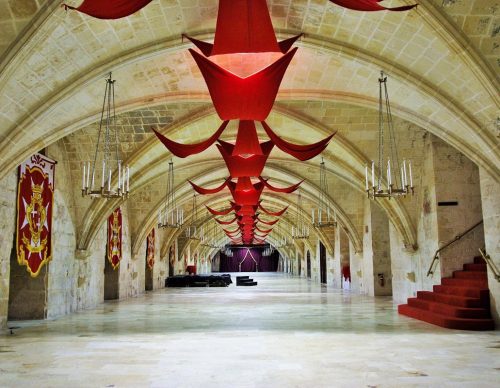

The Knights Hospitallers
The Knights Hospitallers, a medieval Christian military order, played a crucial role in Valletta, Malta. Arriving in 1530, they established their headquarters in Birgu before moving to Valletta in 1571. Under Grand Master Jean Parisot de Valette, they defended Malta successfully during the Great Siege of 1565. The Knights significantly influenced Valletta's construction, fortifying the city with bastions and auberges. Their legacy is evident in Valletta's architecture, including St. John's Co-Cathedral, a magnificent testament to their artistic contributions. The Knights Hospitallers left an enduring mark on Malta, shaping its history and cultural identity.
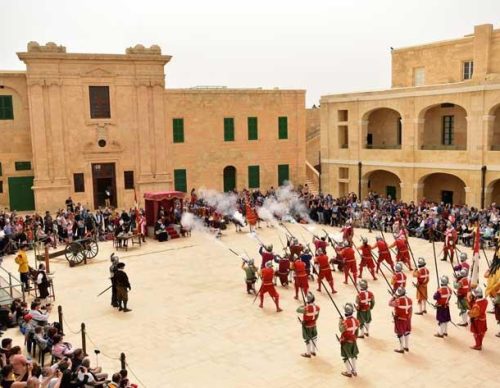
The Fort St. Elmo National War Museum
The Fort St. Elmo National War Museum, housed in the historic fortress of Fort St. Elmo in Valletta, Malta, is a museum dedicated to Malta's military history. It covers periods from ancient times to World War II, emphasizing the fortress's pivotal role in the Great Siege of Malta in 1565. The exhibits include artifacts, weapons, and interactive displays, providing insights into Malta's strategic importance in the Mediterranean. The museum's location in the courtyard of Fort St. Elmo enhances the experience, allowing visitors to explore both the architecture and military history of the island.

The Fort St. Elmo National War Museum
The Fort St. Elmo National War Museum, housed in the historic fortress of Fort St. Elmo in Valletta, Malta, is a museum dedicated to Malta's military history. It covers periods from ancient times to World War II, emphasizing the fortress's pivotal role in the Great Siege of Malta in 1565. The exhibits include artifacts, weapons, and interactive displays, providing insights into Malta's strategic importance in the Mediterranean. The museum's location in the courtyard of Fort St. Elmo enhances the experience, allowing visitors to explore both the architecture and military history of the island.
The Casa Rocca Piccola
Casa Rocca Piccola in Valletta, Malta, is a 16th-century noble house and museum, serving as the ancestral home of the de Piro family for over 400 years. The palace showcases a mix of Baroque and Rococo architecture, with opulent rooms featuring period furniture, art, and artifacts. The family's personal touch adds a unique element to guided tours, providing insights into Malta's aristocratic history. The palace's gardens offer a tranquil retreat, and Casa Rocca Piccola occasionally hosts cultural events, contributing to the preservation of Malta's heritage. The museum stands as a captivating glimpse into the island's aristocratic past.
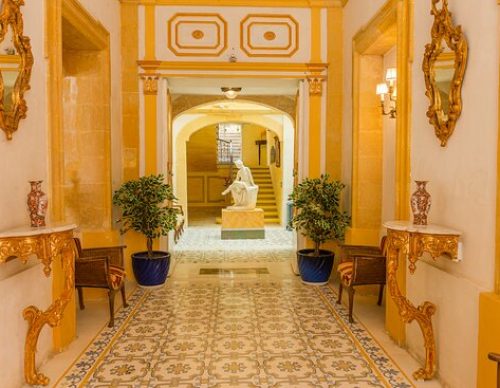

The Casa Rocca Piccola
Casa Rocca Piccola in Valletta, Malta, is a 16th-century noble house and museum, serving as the ancestral home of the de Piro family for over 400 years. The palace showcases a mix of Baroque and Rococo architecture, with opulent rooms featuring period furniture, art, and artifacts. The family's personal touch adds a unique element to guided tours, providing insights into Malta's aristocratic history. The palace's gardens offer a tranquil retreat, and Casa Rocca Piccola occasionally hosts cultural events, contributing to the preservation of Malta's heritage. The museum stands as a captivating glimpse into the island's aristocratic past.
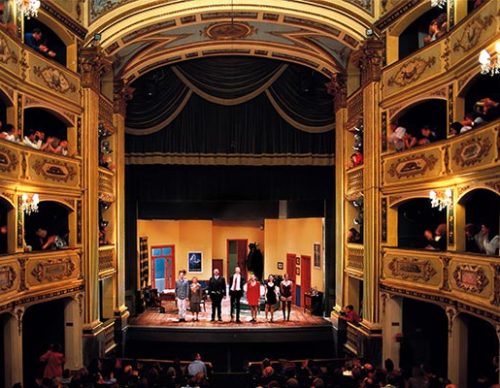
The Manoel Theater
The Manoel Theatre in Valletta, Malta, constructed in 1731, is one of Europe's oldest working theaters. Originally named Teatro Pubblico, it was later renamed in honor of Grand Master António Manoel de Vilhena. This Baroque masterpiece with ornate interiors has continuously hosted operas, plays, concerts, and ballets, contributing to Malta's cultural scene. Known for its historic charm, the theater's gilded details and horseshoe-shaped auditorium provide an intimate setting. Witness to centuries of historical events, the Manoel Theatre remains a symbol of Malta's cultural heritage, undergoing renovations to preserve its historic features.

The Manoel Theater
The Manoel Theatre in Valletta, Malta, constructed in 1731, is one of Europe's oldest working theaters. Originally named Teatro Pubblico, it was later renamed in honor of Grand Master António Manoel de Vilhena. This Baroque masterpiece with ornate interiors has continuously hosted operas, plays, concerts, and ballets, contributing to Malta's cultural scene. Known for its historic charm, the theater's gilded details and horseshoe-shaped auditorium provide an intimate setting. Witness to centuries of historical events, the Manoel Theatre remains a symbol of Malta's cultural heritage, undergoing renovations to preserve its historic features.
The Grandmaster’s Palace and Armouries
The Grandmaster's Palace in Valletta, Malta, built in the 16th century, served as the residence of the Grand Master of the Order of St. John. Reflecting Mannerist and Baroque styles, it houses opulent state rooms and witnesses events like the Changing of the Guard. Adjacent to the palace, the Armouries display a vast collection of medieval arms and armor, showcasing the military history of the Knights of St. John. With historical significance tied to the Great Siege of Malta in 1565, the palace has undergone preservation efforts and stands as a key cultural landmark in Valletta.
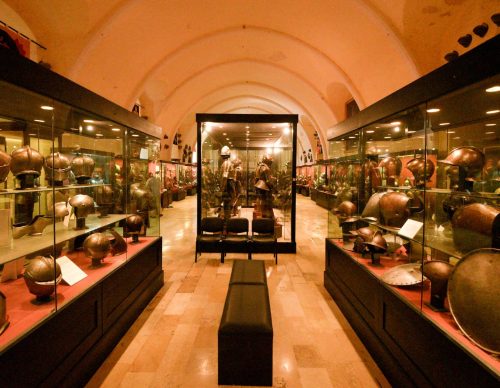

The Grandmaster’s Palace and Armouries
The Grandmaster's Palace in Valletta, Malta, built in the 16th century, served as the residence of the Grand Master of the Order of St. John. Reflecting Mannerist and Baroque styles, it houses opulent state rooms and witnesses events like the Changing of the Guard. Adjacent to the palace, the Armouries display a vast collection of medieval arms and armor, showcasing the military history of the Knights of St. John. With historical significance tied to the Great Siege of Malta in 1565, the palace has undergone preservation efforts and stands as a key cultural landmark in Valletta.
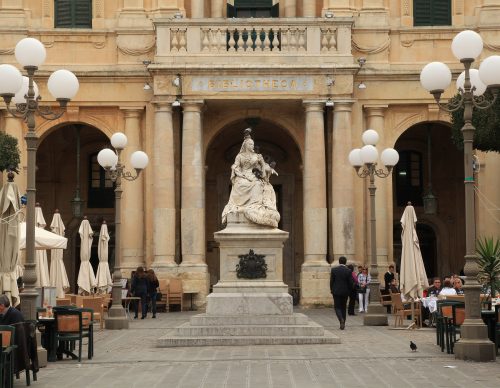
The Queen Victoria Statue
The Queen Victoria Statue in Valletta, Malta, was commissioned in 1891 to commemorate Queen Victoria's Golden Jubilee. Unveiled in 1899 in Republic Square, it features a bronze figure of Queen Victoria on a granite pedestal, sculpted by Giuseppe Valenti. Symbolizing Malta's historical ties with the British Empire, the statue is a popular tourist attraction in Valletta. Originally placed in the square's center, it was later relocated to allow for public events. The monument stands amidst architectural landmarks, including the National Library and the Grand Master's Palace, contributing to Valletta's cultural heritage.

The Queen Victoria Statue
The Queen Victoria Statue in Valletta, Malta, was commissioned in 1891 to commemorate Queen Victoria's Golden Jubilee. Unveiled in 1899 in Republic Square, it features a bronze figure of Queen Victoria on a granite pedestal, sculpted by Giuseppe Valenti. Symbolizing Malta's historical ties with the British Empire, the statue is a popular tourist attraction in Valletta. Originally placed in the square's center, it was later relocated to allow for public events. The monument stands amidst architectural landmarks, including the National Library and the Grand Master's Palace, contributing to Valletta's cultural heritage.
• Maltese Cuisine Tasting Walking Tours: A walking tour in Valletta is not just a feast for the eyes but also for the taste buds. Dive into the world of Maltese cuisine as you explore local eateries and sample traditional dishes. From pastizzi to rabbit stew, each bite tells a story of Malta's culinary heritage.
• Self-Guided vs. Guided Walking Tours in Valletta: Consider the pros and cons of self-guided and guided walking tours. While self-guided tours offer flexibility, guided tours provide in-depth knowledge and local insights. Find the option that suits your preferences and enhances your Valletta exploration.
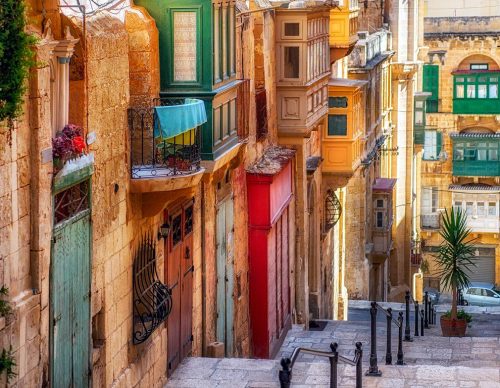

• Self-Guided vs. Guided Walking Tours in Valletta: Consider the pros and cons of self-guided and guided walking tours. While self-guided tours offer flexibility, guided tours provide in-depth knowledge and local insights. Find the option that suits your preferences and enhances your Valletta exploration.
Free Guided Valletta Walking Tours
Find free walking tour options that suits your preferences. Free tours do not have a set price, instead, the guides rely on the tips of participants to sustain their livelihoods. By contributing a fair amount that reflects the value you receive from the tour, you not only support the guides but also express your appreciation for their expertise and dedication.
Embarking on a walking tour in Valletta, Malta, is an enriching journey through time, culture, and picturesque landscapes. From the grandeur of St. John's Co-Cathedral to the hidden corners discovered in the company of a knowledgeable guide, each step reveals the layers of history woven into the fabric of this UNESCO World Heritage city.
Valletta's architectural marvels, a testament to the Baroque era, stand as guardians of the past, while its vibrant markets and local eateries beckon you to savor the flavors of Maltese cuisine. Whether you're a history buff, a photography enthusiast, or a family seeking an immersive experience, Valletta has tailored walking tours to suit your interests.
Remember to prioritize safety, respect local customs, and perhaps consider the recommendations and insights shared by fellow guides. Your walking tour in Valletta is not just a sightseeing adventure; it's a personal exploration, a cultural immersion, and a collection of moments that will stay with you long after your footsteps have faded from its historic streets.




Comment (0)